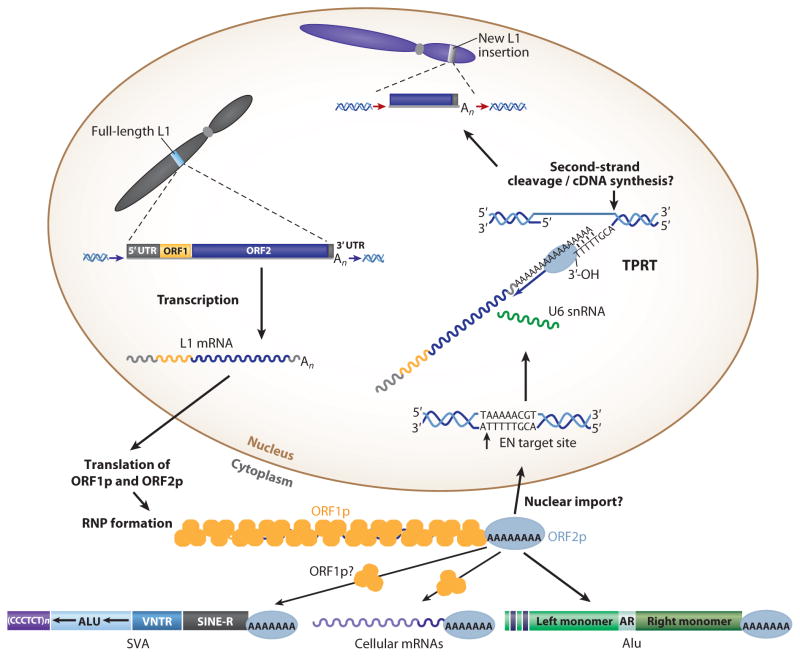Figure 2.
A LINE-1 retrotransposition cycle. A full-length L1 (light blue bar on gray chromosome) is transcribed, the L1 messenger RNA (mRNA) is exported to the cytoplasm, and translation of ORF1p ( yellow circles) and ORF2p (blue oval ) leads to ribonucleoprotein (RNP) formation. Components of the L1 RNP are transported to the nucleus, and retrotransposition occurs by target-site primed reverse transcription (TPRT). During TPRT, the L1 endonuclease (EN) nicks genomic DNA, exposing a free 3′-OH that can serve as a primer for reverse transcription of the L1 RNA. The processes of second-strand cleavage, second-strand complementary DNA (cDNA) synthesis, and completion of L1 integration require elucidation. TPRT results in the insertion of a new, often 5′-truncated L1 copy at a new genomic location ( gray bar on purple chromosome) that generally is flanked by target-site duplications (red arrows). Alu, SINE-R/VNTR/Alu (SVA), and cellular mRNAs may hijack the L1-encoded protein(s) in the cytoplasm to mediate their trans mobilization. U6 small nuclear RNA (snRNA) may be integrated with L1 during TPRT. Question marks denote steps in the retrotransposition pathway of unknown mechanism.

